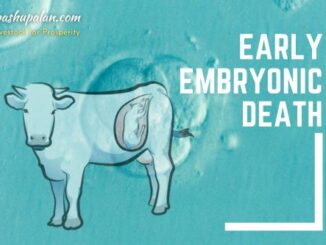Sarcocystosis, a protozoal parasitic disease that is widely distributed in mammals, birds and reptiles. Sarcocystis is classified in the phylum Apicomplexa, along with species of Eimeria that cause coccidiosis in poultry and livestock, Toxoplasma gondii, which infects virtually all warm-blooded vertebrates and species of Cystoisospora that infect humans and a variety of animals. Sarcocystis species are ubiquitous in nature and are found worldwide.

Two hosts are required to maintain the life cycle: an intermediate or prey host, in which cysts (sarcocysts) containing infectious zoites infect the muscles, and a definitive, final, or predator host that ingests the cysts, becomes infected with intestinal-stage parasites, and excretes oocysts or sporocysts into the environment. The lifecycle of a typical member of this genus involves two host species, a definitive host and an intermediate host, most intermediate hosts include herbivorous mammals and humans and other primates but also some birds, reptiles, and possibly fish. Definitive hosts include carnivores or omnivores, including humans and some reptiles and raptorial birds. Although others may exist, only Sarcocystis nesbitti has been identified in humans and nonhuman primates serving as intermediate hosts, with a snake possibly serving as the definitive host. However, this identification is based on a comparison of available congeners that most closely matched those of species in which snakes were the final hosts and has yet to be confirmed. Two species, Sarcocystis hominis and S. suihominis, have been identified in humans and nonhuman primates serving as definitive hosts.
Transmission
Sarcocystis spp. have an indirect life cycle, and must develop in both an intermediate and a definitive host. In many cases, a Sarcocystis species cycles through a specific predator or scavenger, and its prey. The definitive host becomes infected when it ingests encysted parasites (sarcocysts) in muscle tissues. Sarcocysts are oval, whitish cysts that vary in size from microscopic to visible. They are filled with hundreds to thousands of bradyzoites. Intermediate hosts become infected when they ingest oocysts or sporocysts. The sporozoites are released in the intestines and cross into the bloodstream.
Clinical Signs
In humans, two types of the disease can occur, one causes diarrhea, mild fever, and vomiting (intestinal type), and the other type causes muscle pain, transitory edema, and fever (muscular type). However, most people infected with Sarcocystis do not have symptoms.
Myositis
when human is intermediate host myositis is the primary syndrome. The spectrum of illness ranges from acute self-limited infections to chronic, moderately severe disease. Painful muscle swelling, erythema, muscle tenderness, generalized muscle weakness and fever. Other reported symptoms include cough, arthralgia, transient pruritic rashes, headache, malaise, lymphadenopathy and muscle wasting.
Intestinal sarcocystosis
When humans serve as the definitive host (S. suihominis or S. hominis), the clinical signs may include fever, chills, sweating, diffuse abdominal tenderness, diarrhea, nausea and vomiting. Dehydration may occur as a result of the diarrhoea and vomiting. Eosinophilic enteritis and rare cases of acute intestinal obstruction have been reported.
Sarcocystosis is a zoonotic disease which have following signs in animals
- In cattle (S.cruzi, the most pathogenic species), the disease manifests fever, anorexia, anaemia, loss of weight, loss of body hair (particularly at the tip of the tail), weakness, muscle twitching, prostration, abortion, reduced milk-yield, hypersalivation, neurologic signs and death.
- Pregnant cows may abort and milking cows may have reduced milk yield.
- Haemorrhages are most evident on the serous surface of viscera, in cardiac and skeletal muscles, and in the sclera of the eyes.
- In acute sarcocystosis, skeletal muscles are seen mottled or striped with pale areas, interspersed with dark haemorrhagic areas.
Diagnostic Tests
Intestinal infections can be diagnosed by detecting sporulated sporocysts in the feces, using zinc sulfate flotation. Sarcocysts may be found in the muscles by microscopic examination of a muscle biopsy. A CT scan and MRI can sometimes visualize sarcocysts in the muscles. A complete blood count, to reveal eosinophilia, may also be helpful. Serologic tests include an indirect immunofluorescent antibody test and immunoblotting. Immunoblotting may be useful for muscle infections, but is not considered to be valuable for intestinal infections. Serologic tests may not be widely available.
Treatment
Intestinal sarcocystosis may not be treated, as the typical infection is self-limiting. Symptomatic myositis may be treated with antiparasitic agents such as metronidazole, cotrimoxazole and albendazole. Corticosteroids may be used to reduce inflammation. Asymptomatic cases may not require treatment.
Therapeutic treatment of animals has been ineffective, but
- In cattle, prophylactic dose of amprolium (100 mg/kg body weight, SID for 30 days) may reduce illness.
- In sheep, prophylactic administration of amprolium or salinomycin can be given.
Prevention and control
- The main objective in controlling sarcocystosis is to interrupt the life cycle, which will minimize the spread of sporocysts the definitive hosts.
- Uncooked meat or offal should never be left to feed carnivores.
- Dead livestock should be buried or incinerated to avoid access of carnivores.
- Cooking of the meat above 55oC for 20 minutes or at 70oC for 15 minutes destroys the cysts.
- Freezing of the meat at 4oC for 2 days or -20oC for 1 day can kill sarcocysts in meat








Be the first to comment